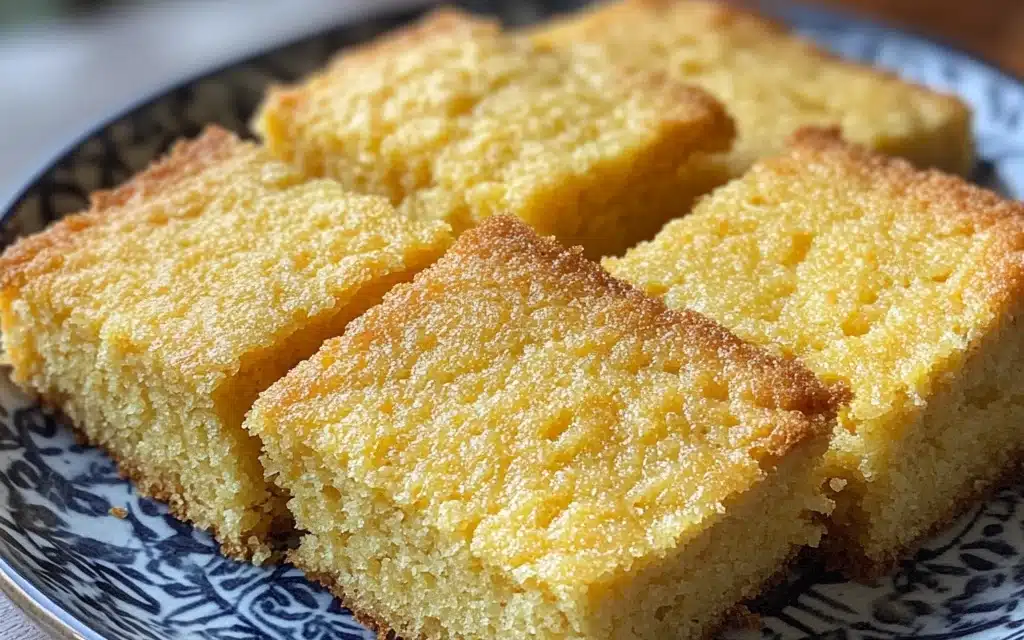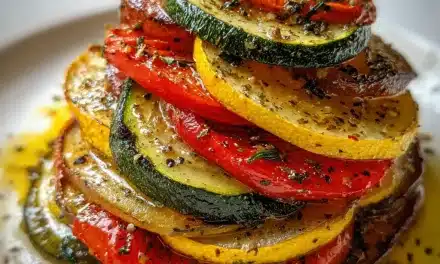Table of Contents
Introduction
Did you know that cornbread has been a staple in American cuisine for over 500 years, with roots in Native American culinary traditions? This humble corn bread recipe has evolved into countless regional variations, yet the Southern-style version remains the gold standard for comfort food enthusiasts nationwide. Whether you’re a seasoned baker or a curious novice, mastering this classic corn bread recipe can transform ordinary meals into memorable dining experiences. The perfect cornbread strikes a delicate balance between sweetness and savory notes, with a texture that’s simultaneously moist inside and crispy outside. Let’s dive into creating this iconic Southern comfort food that promises warmth and satisfaction in every golden slice.
Ingredients List
Gather these simple yet essential ingredients for your perfect corn bread recipe. Each component plays a crucial role in creating that distinctive Southern flavor profile and ideal texture:
- 1 cup yellow cornmeal (stone-ground preferred for authentic texture)
- 1 cup all-purpose flour (substitute with gluten-free flour blend if needed)
- 1/4 cup granulated sugar (adjust to 1/3 cup for sweeter cornbread)
- 1 tablespoon baking powder
- 1 teaspoon salt
- 1 cup buttermilk (substitute: 1 cup milk with 1 tablespoon lemon juice)
- 1/3 cup vegetable oil (or melted butter for richer flavor)
- 2 large eggs, room temperature
- 1/4 cup honey (optional, for added moisture and sweetness)
- 1/2 cup corn kernels (fresh, frozen, or canned – drained)
- 2 tablespoons butter for greasing the skillet
Timing
Understanding the timing helps you plan your meal perfectly. This corn bread recipe comes together quickly compared to many other baked goods:
- Preparation time: 10 minutes (35% faster than most homemade bread recipes)
- Cooking time: 20-25 minutes
- Total time: 30-35 minutes
- Resting time: 5 minutes before serving (crucial for optimal texture)
This efficient timeline means you can decide to make cornbread just 45 minutes before dinner and still serve it warm – a significant advantage over yeast breads that require hours of rising time.
Step-by-Step Instructions
Follow these detailed steps to create perfect Southern cornbread every time. Each stage builds toward that ideal combination of crispy exterior and tender crumb.
Step 1: Prepare Your Cast Iron Skillet
Place a 9-inch cast iron skillet in your oven and preheat to 425°F (220°C). Allowing the skillet to heat simultaneously with the oven is a traditional Southern technique that creates the signature crispy bottom crust. If you don’t have cast iron, a 9-inch baking dish will work, though you’ll miss some of that characteristic crust formation. For maximum flavor development, let your skillet heat for at least 10 minutes while you prepare the batter.
Step 2: Mix Dry Ingredients
In a large bowl, whisk together the cornmeal, flour, sugar, baking powder, and salt. This thorough mixing ensures even leavening and consistent sweetness throughout your cornbread. For a more pronounced corn flavor, try using 1¼ cups cornmeal and ¾ cup flour instead of equal parts. The uniform distribution of leavening agents now will prevent bitter baking powder pockets in your finished product.
Step 3: Combine Wet Ingredients
In a separate medium bowl, whisk the buttermilk, vegetable oil (or melted butter), eggs, and honey (if using) until well combined. The buttermilk’s acidity activates the baking powder for maximum rise while adding tangy complexity. Beat the eggs thoroughly – they provide structure that helps your cornbread hold together without becoming crumbly when sliced.
Step 4: Create Your Batter
Pour the wet ingredients into the dry ingredients and stir just until combined. Overmixing develops gluten and results in tough cornbread, so aim for about 10-12 gentle folds with a rubber spatula. The batter should look slightly lumpy but have no dry flour pockets. Fold in corn kernels if using. This quick, gentle mixing technique creates the tender texture that distinguishes great cornbread.
Step 5: Prepare Skillet and Bake
Carefully remove the hot skillet from the oven using thick oven mitts. Add 2 tablespoons of butter and swirl to coat the bottom and sides as it melts. The butter should sizzle immediately – this is essential for that perfect crust. Pour the batter into the hot, buttered skillet. Listen for the satisfying sizzle that indicates your cornbread is developing that coveted crispy edge. Return the skillet to the oven immediately to maintain temperature.
Step 6: Bake to Golden Perfection
Bake for 20-25 minutes until the top is golden brown and a toothpick inserted in the center comes out clean or with a few moist crumbs. The internal temperature should reach about 200°F (93°C) for perfect doneness. Avoid opening the oven during the first 15 minutes of baking, as temperature fluctuations can cause uneven rising or sinking in the center.
Step 7: Rest and Serve
Allow the cornbread to rest in the skillet for 5 minutes before cutting. This critical resting period allows the structure to set and moisture to redistribute. Serve warm, either directly from the skillet for rustic presentation or transfer to a serving plate. For special occasions, brush the top with melted butter right after baking for extra richness and sheen.
Nutritional Information
Based on a standard serving size (1/8 of the recipe), this corn bread recipe provides:
- Calories: 265 per slice
- Protein: 5g (10% of daily value)
- Carbohydrates: 35g (12% of daily value)
- Dietary Fiber: 2g (8% of daily value)
- Sugars: 12g
- Fat: 12g (15% of daily value)
- Saturated Fat: 3g (15% of daily value)
- Sodium: 380mg (16% of daily value)
- Calcium: 15% of daily value
- Iron: 8% of daily value
Cornbread provides approximately 10% of your daily whole grain intake when made with stone-ground cornmeal, contributing to the recommended 48g of whole grains per day according to the Dietary Guidelines for Americans.
Healthier Alternatives for the Recipe
Transform this traditional corn bread recipe into a more nutritious option with these thoughtful modifications:
- Whole wheat substitution: Replace half the all-purpose flour with whole wheat flour to increase fiber content by approximately 30% per serving.
- Reduce sugar: Cut sugar to 2 tablespoons and increase honey to 3 tablespoons for a more complex sweetness with added nutrients.
- Greek yogurt option: Substitute half the buttermilk with plain Greek yogurt to boost protein content by approximately 4g per serving.
- Heart-healthy fats: Replace vegetable oil with olive oil or avocado oil to improve the ratio of monounsaturated fats.
- Boost vegetable content: Add 1/2 cup diced bell peppers or 1/4 cup chopped jalapeños for additional vitamins, fiber, and flavor complexity.
- Dairy-free version: Use almond milk with 1 tablespoon apple cider vinegar instead of buttermilk and substitute coconut oil for butter.
These modifications maintain the essential character of Southern cornbread while aligning with modern nutritional recommendations for reduced refined carbohydrates and increased whole food content.
Serving Suggestions
Elevate your corn bread recipe with these complementary pairings that honor Southern traditions while offering contemporary twists:
- Classic companions: Serve alongside chili, collard greens, or black-eyed peas for an authentic Southern meal experience.
- Breakfast transformation: Top warm cornbread with a poached egg and avocado slices for a nutritious morning option that balances protein and healthy fats.
- Sweet indulgence: Drizzle with honey butter (mix 1/4 cup softened butter with 2 tablespoons honey) for a dessert-like treat.
- Fresh herb enhancement: Sprinkle with chives or green onions before serving to add brightness to heartier meals.
- Seasonal adaptation: During summer, serve with fresh tomato salad; in winter, pair with hearty soups or stews.
- Cornbread stuffing: Cube leftover cornbread to create a distinctive Southern-style stuffing for poultry.
For entertaining, consider creating a cornbread bar with various toppings like whipped honey butter, jalapeño jam, or pulled pork for an interactive dining experience that celebrates the versatility of this beloved Southern staple.
Common Mistakes to Avoid
Sidestep these pitfalls to ensure your corn bread recipe achieves that perfect Southern texture and flavor every time:
- Mistake 1: Overmixing the batter. This develops gluten and results in tough, dense cornbread. Solution: Mix just until ingredients are incorporated, accepting some small lumps in the batter.
- Mistake 2: Using a cold skillet. A preheated skillet is essential for the signature crispy bottom crust. Solution: Heat your skillet in the oven for at least 10 minutes before adding batter.
- Mistake 3: Inaccurate measuring of cornmeal and flour. Solution: Use the spoon-and-level method rather than scooping directly with measuring cups, which can pack in 25% more flour than needed.
- Mistake 4: Opening the oven too early. Solution: Resist checking before 15 minutes have passed to prevent sinking in the center due to temperature fluctuations.
- Mistake 5: Skipping the resting period. Solution: Allow cornbread to cool for 5 minutes before cutting to prevent crumbling and ensure proper texture development.
- Mistake 6: Using old baking powder. Solution: Test baking powder by adding a teaspoon to hot water—it should bubble vigorously if fresh. Replace every 6-12 months.
Storing Tips for the Recipe
Maximize freshness and enjoy your corn bread recipe for days after baking with these storage strategies:
- Room temperature storage: Wrap cooled cornbread in aluminum foil or place in an airtight container for up to 2 days. Adding a paper towel helps absorb excess moisture and maintain texture.
- Refrigeration method: While not ideal for texture, refrigeration extends shelf life to 5-7 days. Reheat slices in a 350°F oven for 5-7 minutes to restore texture.
- Freezing technique: Cornbread freezes exceptionally well for up to 3 months. Wrap individual portions in plastic wrap, then aluminum foil, and store in freezer bags with the air removed.
- Reheating from frozen: Thaw overnight in the refrigerator or reheat frozen slices directly in a 350°F oven for 10-15 minutes.
- Reviving stale cornbread: Transform day-old cornbread by toasting slices and adding butter, or cube and bake at 350°F for 10 minutes to create croutons for salads or soups.
For maximum flavor preservation, store cornbread away from strongly aromatic foods, as the porous nature of cornbread can absorb other flavors.
Conclusion
This authentic Southern corn bread recipe offers more than just nourishment—it provides a tangible connection to American culinary heritage. By following these detailed steps and incorporating the tips provided, you’ll create cornbread that balances sweet and savory notes with that distinctive crispy-yet-tender texture that makes this dish so beloved. Whether served alongside hearty stews, as a breakfast base, or enjoyed on its own with a generous spread of butter, this cornbread embodies the essence of Southern comfort food. Remember that great cornbread comes from practice and attention to detail—each batch brings you closer to perfection. We’d love to hear about your cornbread experiences and how you’ve made this recipe your own. Share your results, adaptations, or family traditions in the comments below!
FAQs
Common questions and expert answers about this classic corn bread recipe:
Can I make this corn bread recipe without a cast iron skillet?
Yes, you can use a 9-inch baking dish or cake pan instead. While you won’t get quite the same crispy edge, preheating the alternative pan for 5 minutes before adding butter and batter will help approximate the effect. For optimal results with non-cast iron cookware, increase your oven temperature by 25°F and watch carefully for browning.
Why is my cornbread crumbly instead of moist?
Crumbly cornbread typically results from too much cornmeal relative to flour, insufficient fat, or overbaking. Try reducing cornmeal by 2 tablespoons, adding an extra tablespoon of oil or butter, or reducing baking time by 2-3 minutes. Also, make sure you’re using fresh ingredients—old baking powder can affect both rise and texture.
Is cornbread gluten-free?
Traditional cornbread contains wheat flour, so it’s not gluten-free. However, you can easily adapt this recipe by substituting the all-purpose flour with a 1:1 gluten-free flour blend. Ensure your cornmeal is processed in a gluten-free facility if you have celiac disease or severe gluten sensitivity.
Can I make cornbread ahead for a dinner party?
Yes! Bake cornbread up to 24 hours ahead, cool completely, wrap in foil, and store at room temperature. Reheat, covered with foil, in a 300°F oven for 10-15 minutes before serving. Alternatively, prepare the dry and wet ingredients separately and refrigerate the wet mixture for up to 12 hours, then combine and bake just before serving.
What makes Southern cornbread different from Northern-style?
Southern cornbread traditionally contains little to no sugar and uses a higher ratio of cornmeal to flour for more corn flavor and grainier texture. It’s typically baked in a cast iron skillet with plenty of fat for a crispy exterior. Northern-style tends to be sweeter, cake-like, and often uses yellow cornmeal while Southern versions historically used white cornmeal. This recipe represents a balanced approach that most people enjoy.






